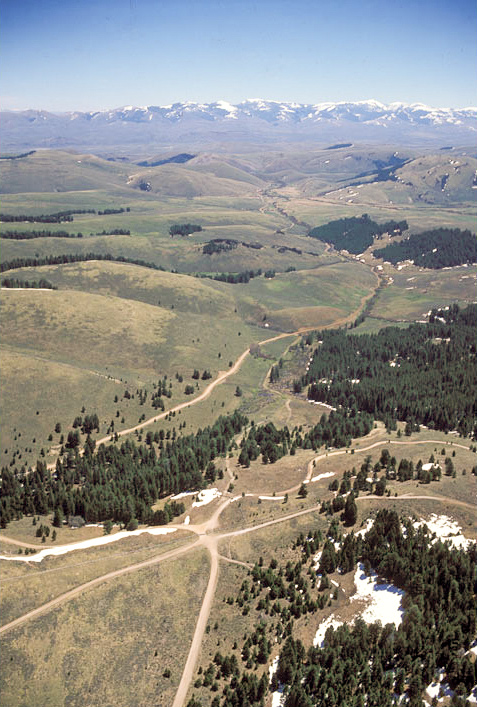The gravel road winding through the center of the picture parallels Trail Creek, which is lined by low willows. It corresponds roughly to the Indian road that Lewis, Drouillard, Shields, and McNeal followed westward from the forks of the Beaverhead River.
On 12 August 1805, somewhere near the uppermost large grove of trees on the right, Private McNeal “exultingly stood with a foot on each side of this little rivulet and thanked his god that he had lived to bestride the mighty & heretofore deemed endless Missouri,” wrote Lewis. Two miles farther, the four men found the spring that was the creek’s source, hidden in the large grove of trees at far right center of the photo, “the most distant fountain of the waters of the mighty Missouri in surch of which we have spent so many toilsome days and wristless nights.” He never suspected that at that point he was still nearly 90 miles from the farthest source of the Missouri, nor that it would be another 84 years before it was discovered.
The four men “proceeded on to the top of the dividing ridge” where the several gravel roads converge today (lower center)—Lemhi Pass. They then descended the steep west side of the pass about three-quarters of a mile “to a handsome bold running creek of cold Clear water” among the trees at lower right, where they “first tasted the water of the great Columbia river.”
For more, see on this site Across the Great Divide.
From Discovering Lewis & Clark from the Air
Photography by Jim Wark
Text by Joseph Mussulman
Reproduced by permission of Mountain Press

